Information about the noxious weed wild chervil. Wild chervil is also known by its scientific name, Anthriscus sylvestris. In this section
Wild chervil is a regulated Class B noxious weed. This means control is required in King County under the state noxious weed law with selective regulation in King County.
Wild chervil is also on the Washington quarantine list and it is illegal to buy, sell, or offer it for sale in the state.
Wild chervil is known as Anthriscus sylvestris and it is in the carrot/parsley family, Apiaceae. Another common name for wild chervil is cow-parsley.
Cilantro, also known as coriander, is a popular culinary herb recognized for its bright, citrusy flavor. However, cilantro has some look-alike weeds that can easily be mistaken for the real thing. These imposters can quickly take over your garden if left unchecked. This article will go over how to identify weeds that resemble cilantro and provide tips for effectively removing them.
Characteristics of Cilantro
Before we look at cilantro look-alikes let’s review some key characteristics of cilantro itself:
- Feathery, delicate leaves that are finely divided into lacy segments
- Bright green leaves with a soft, ruffled appearance
- Leaves arranged alternately along the stem
- Distinctive citrusy aroma when crushed
- Grows up to 2 feet tall
- Produces white flowers in umbrella-shaped clusters
Keep these attributes in mind as we explore some common weeds that bear a resemblance.
Weeds that Can be Confused with Cilantro
Poison Hemlock
Poison hemlock (Conium maculatum) is a particularly dangerous cilantro look-alike. This weed contains toxic alkaloids that can cause paralysis, respiratory failure, and even death if ingested.
Distinguishing features:
- Fern-like leaves that are shiny and lack cilantro’s aroma
- Purple splotches on hollow green stems
- Grows up to 10 feet tall
- Small white flowers in umbrella-shaped clusters
Wild Carrot
Also known as Queen Anne’s lace, wild carrot (Daucus carota) is another weed that resembles cilantro at first glance.
Distinguishing features
- More finely divided leaves than cilantro
- Stems densely covered in bristly hairs
- Flat-topped clusters of tiny white flowers
Chervil
A popular herb in French cuisine, chervil (Anthriscus cerefolium) is often mistaken for cilantro.
Distinguishing features:
- More delicate, fern-like leaves than cilantro
- Distinct anise-like aroma when crushed
- Small white flowers on long stems
Dill
With its feathery leaves, dill (Anethum graveolens) bears a similarity to cilantro, especially when young.
Distinguishing features:
- Blue-green color rather than cilantro’s brighter green
- Distinctive dill aroma when leaves are crushed
- Yellow flower clusters
How to Remove Cilantro Look-Alikes
If you spot any of these cilantro fakes growing in your garden, prompt removal is key before they go to seed and spread. Here are some tips for effective removal:
-
Manual uprooting: Carefully dig down to loosen the soil and extract the entire root system. This is the most effective method. Wear gloves to protect your skin.
-
Cutting: Using a sharp hoe, spade or shears, cut the weed off at its base, as close to the ground as possible. Be thorough in removing all plant material to prevent regrowth.
-
Smothering: Cover the weeds with several inches of organic mulch like wood chips or leaves. This cuts off their access to sunlight. Replenish the mulch as needed.
-
Using vinegar: Spray full strength vinegar on the weeds to burn and kill foliage and roots. Avoid contact with desired plants. Reapply as needed.
-
Solarizing: Cover weeds with a plastic tarp or black landscaping fabric. The heat from the sun will kill them over time. Keep covered for at least 6 weeks.
-
Flame weeding: Use a propane torch to apply heat directly to weeds, which disrupts plant tissues and kills the weed. Carefully avoid lighting your other plants on fire.
Preventing Further Growth
Once you’ve eliminated the current weeds, there are several steps you can take to prevent regrowth and future invasions:
-
Maintain a thick layer of mulch around your plants to suppress weeds.
-
Cultivate the soil frequently to disrupt weed seeds and seedlings.
-
Plant densely to crowd out space for weeds to establish.
-
Promptly pull any new weeds as soon as you spot them.
-
Keep your garden well-hydrated and fertilized to promote vigorous growth.
-
Rotate your crops each season to disrupt weed cycles.
-
Use pre-emergent herbicides labeled for your garden area.
Key Takeaways
-
Several common weeds like poison hemlock, wild carrot, chervil and dill can be mistaken for cilantro at first glance.
-
Identifying differences in leaf shape, plant height, flowers and aroma can help distinguish cilantro from look-alikes.
-
Manual uprooting, cutting, smothering and using vinegar or flame weeding are effective weed removal methods.
-
Prevent future growth through mulching, cultivation, dense planting, prompt weeding and other smart gardening practices.

Be aware of look-alike plants
Many plants look similar to Wild chervil, including:
Other similar looking plants are members of the parsley/carrot family such as fennel, chervil, and anise.
When in doubt, take photos and share them with us or report them on iNaturalist.
Why it’s a noxious weed
- Wild chervil can grow in almost any type of soil and creates dense patches which are difficult to control.
- It produces poor quality forage or hay for animals.
- Wild chervil outcompetes native and desired vegetation.
- It grows fine in shaded areas which can impact otherwise healthy or healing forest understories.
- Wild chervil can host a virus that attacks cultivated carrots, parsnips, and celery.
Wild chervil is a biennial (two-year life cycle) or short-lived perennial (plants that have a 2+ year life cycle). It can grow up to 3-5 feet tall. It can be found in degraded fields, open woodlands, and roadsides. It tolerates part-shade conditions and forest edges. The stems are all green, hollow, ribbed, and grow hairy fringes at the nodes (junctions where leaves/stems grow from). The leaves are dark green, ferny, and sharply pointed. They are pinnately compound, meaning divided into leaflets arranged along a central stem in a feather-like form.
Wild chervil has small, white flowers clustered in an umbrella shape, with multiple smaller clusters within each larger one. Seeds are in pairs with small antennae-like points at the top. They only remain viable in the soil for 1-2 years.
The roots are thick and tuberous and can produce buds that detach and grow a clone of the parent plant after it dies.
Wild chervil is native to Eurasia and was likely transported to North America in seed mixes.
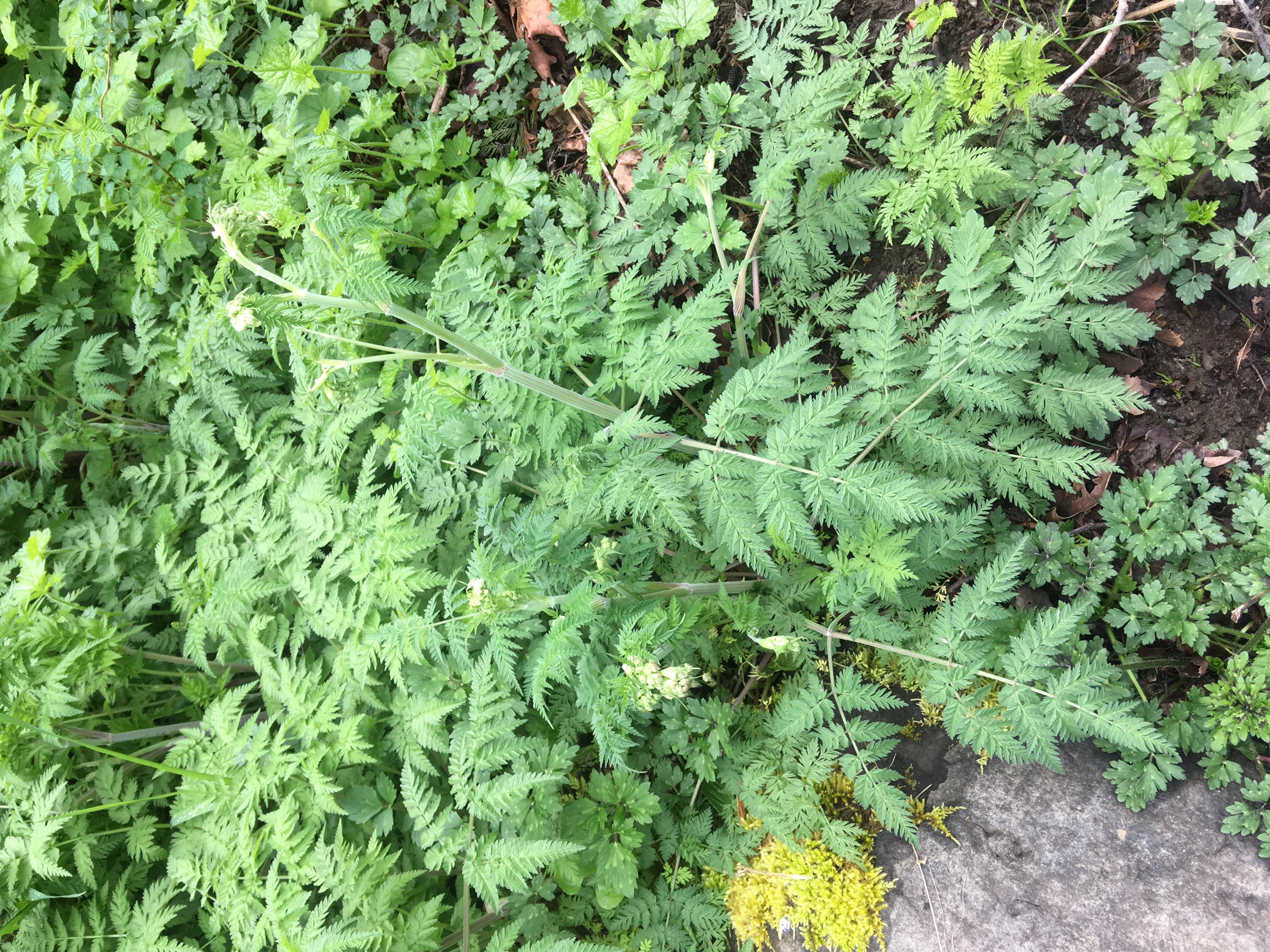
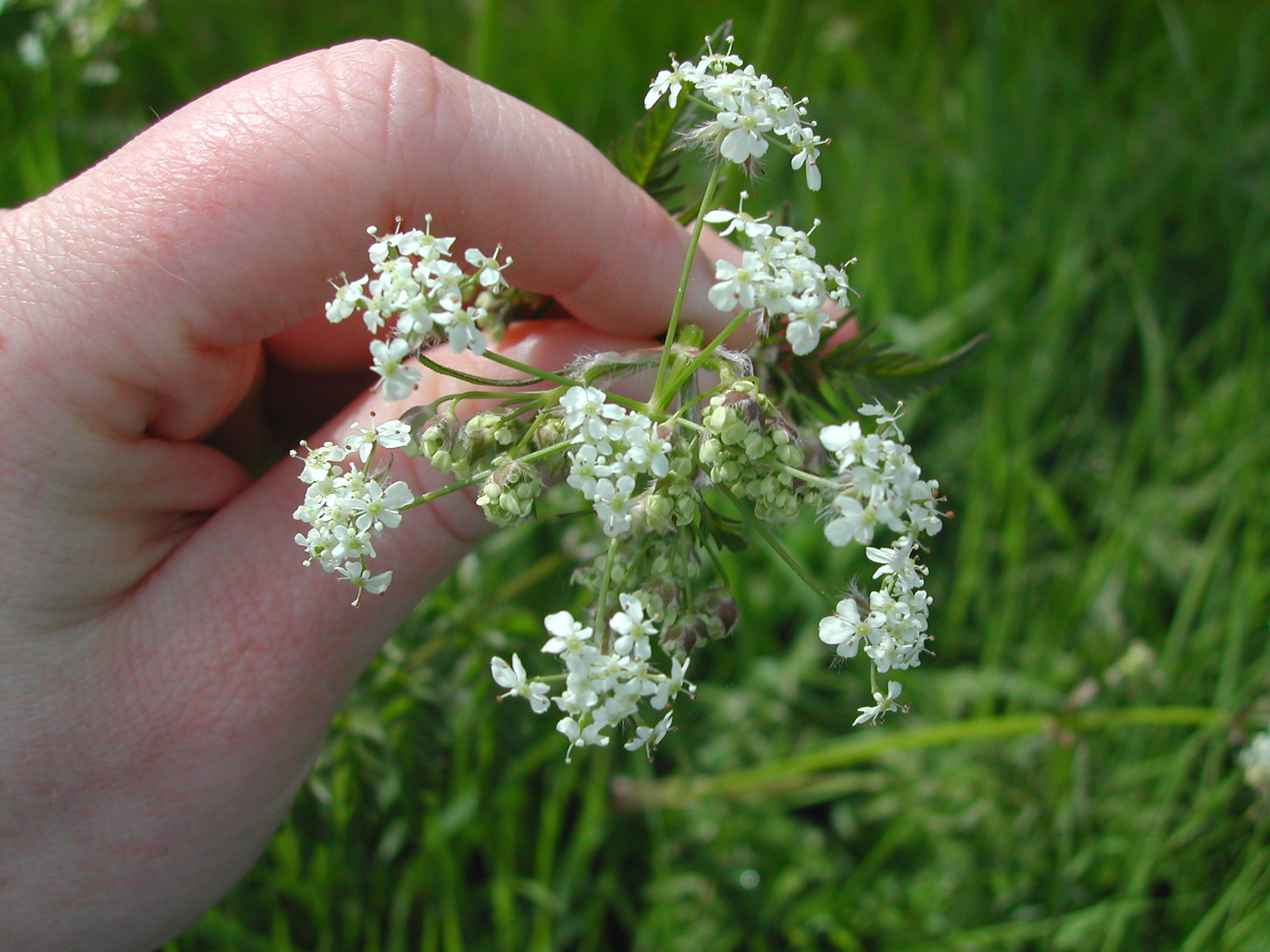
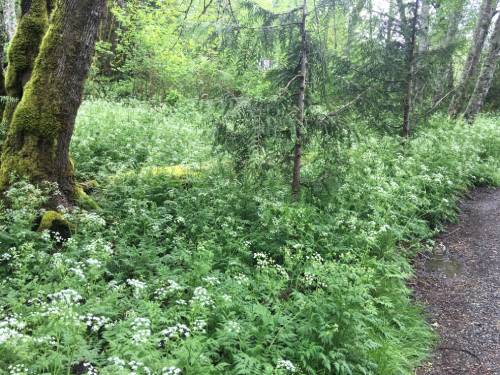
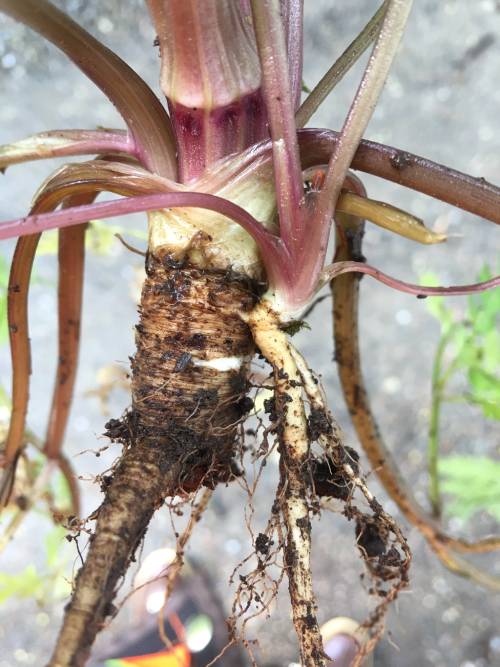
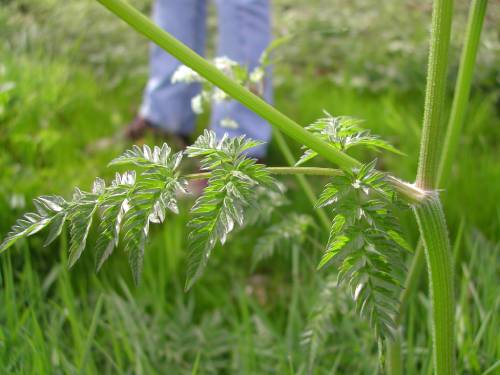
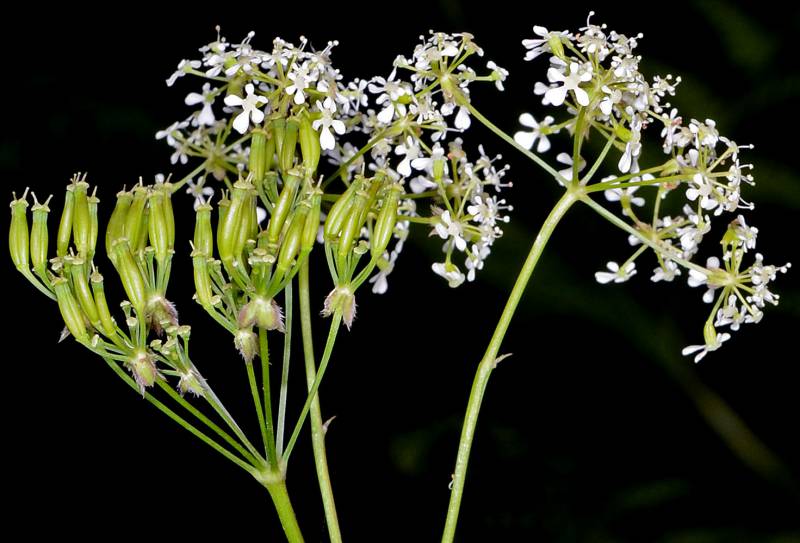
Leaves are often confused as ferns due to their lacy structure. The difference is more obvious as they grow upright along taller stems.
Wild chervil flowers are like many in the carrot family (white/umbrella), but their flower clusters form sub-clusters and are generally smaller overall.
Wild chervil is shade tolerant and are sometimes found growing in shades forest understories.
As a member of the carrot family, wild chervils root is carrot like (tap root), but wild chervil in particular may grow a bud on its root from which a new plant can develop as the existing plant dies back.
Fern like leaves grow from upright, fuzzy, ridged stems.
After flowering, the tiny white flowers close into narrow green pods that will soon develop seeds.
Is my Cilantro bolting? #treehousegardenkimberly #garden #gardenshorts #seedtheday #cilantro #spring
FAQ
What is the wild plant that looks like cilantro?
You’d never guess by looking at it. Unlike the petite leaves of cilantro, culantro’s deep green leaves are long—about eight inches—and almost sword shaped with sawtooth edges that look like someone took pinking shears to them. Culantro is native to Mexico, the Caribbean, South and Central America, and Southeast Asia.
What looks like cilantro but isn’t?
Parsley. Grassy and green, parsley is a very close cousin to cilantro. (They’re often mistaken for one another in the supermarket.) Though parsley is more bitter, it brings out a lot of freshness in other ingredients, like vegetables and fruits.
What is eating cilantro in my garden?
Rabbits and deer are fond of this herb.
A physical barrier, such as a tall fence, is the best protection for garden-grown cilantro. Or grow it in a pot up on the deck.
Is wild cilantro edible?
All parts of the plant are edible, but the fresh leaves and the dried seeds are the most commonly used in cooking. The leaves and seeds have individual and distinct flavors; they are not interchangeable in recipes.
What weeds look like grass?
In this section, we will look at 15 weeds that look like grass and how to remove them. 1. Crabgrass (Digitaria sanguinalis) If you come across an unwanted grass type that looks like Bermuda grass in your lawn, especially if the yard is made up of a different grass type, you likely have crabgrass invasion.
What are the two types of weeds?
The two types of weeds are broadleaf plants and narrow leaf plants. Broadleaf weeds like dandelion or stinging nettle have large leaves and can have taproot or fibrous root systems. Narrow-leaved weeds are grassy plants that grow as tuft-like clumps of grass. Proper weed identification is the first step to removing them.
How do you identify broadleaf weeds?
Broadleaf weeds like dandelion or stinging nettle have large leaves and can have taproot or fibrous root systems. Narrow-leaved weeds are grassy plants that grow as tuft-like clumps of grass. Proper weed identification is the first step to removing them. To identify weeds, look at the type of leaf, flower, and root system.
How do you identify weeds?
Proper weed identification is the first step to removing them. To identify weeds, look at the type of leaf, flower, and root system. For example, weeds tend to have a thick root, making them difficult to remove, or a creeping fibrous root system that spreads quickly. Weeds spread easily and quickly and take root where you least want them.
What does a self heal weed look like?
Common Self-Heal (Prunella vulgaris) Common self-heal is a tough, spreading perennial purple weed with creeping stems producing edible, green, egg-shaped leaves on long slender stalks. The weed blooms from spring until fall, and the flowers appear as bluish or purplish flowers growing in a cylinder cluster.
Are weeds bad?
“Weeds” aren’t inherently bad. Many weeds stabilize the soil and add organic matter. Some are edible to humans and provide habitat and food for wildlife, too. Weeds are also indicators of your soil’s health—or lack thereof.
